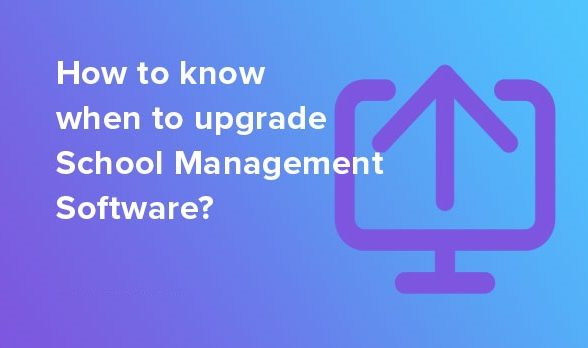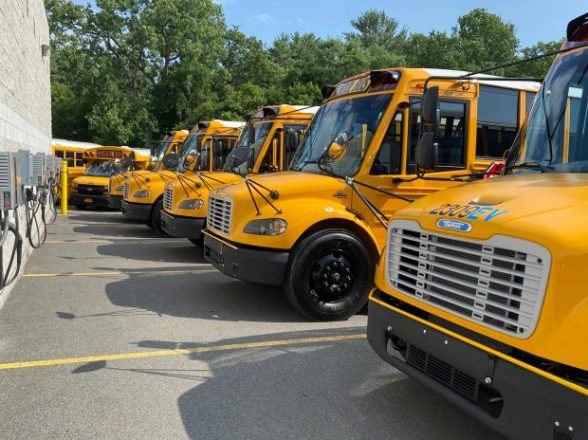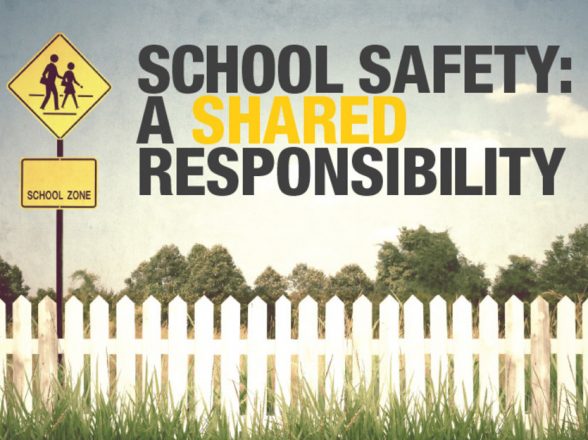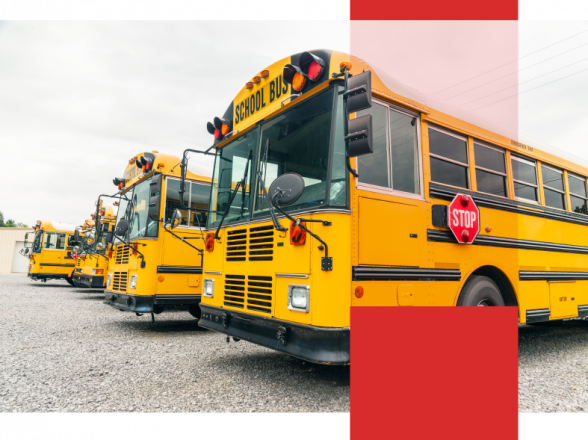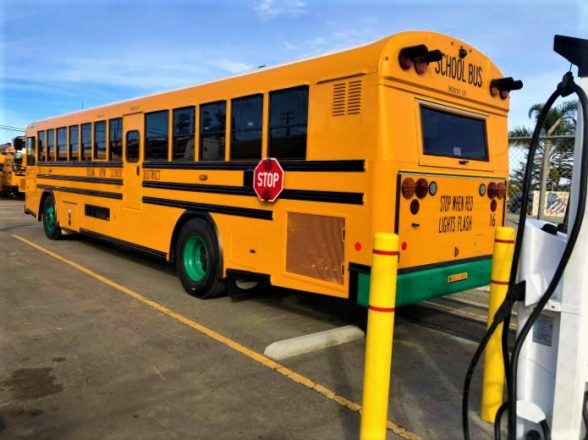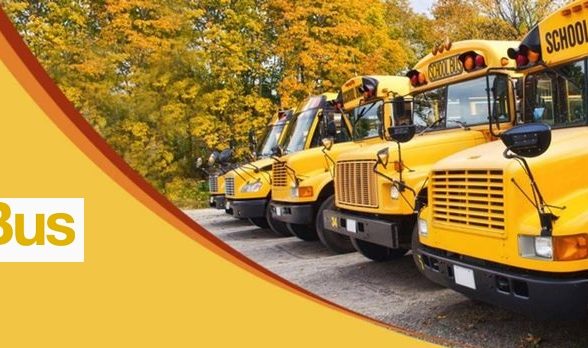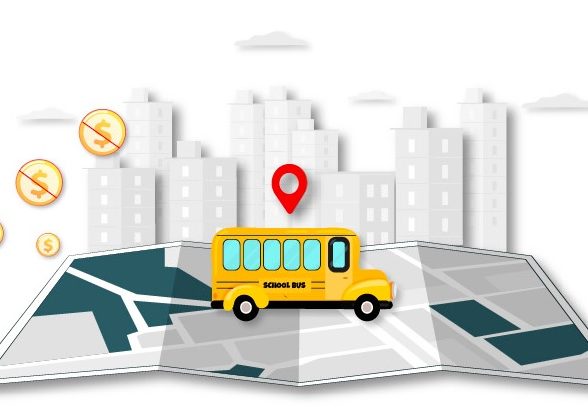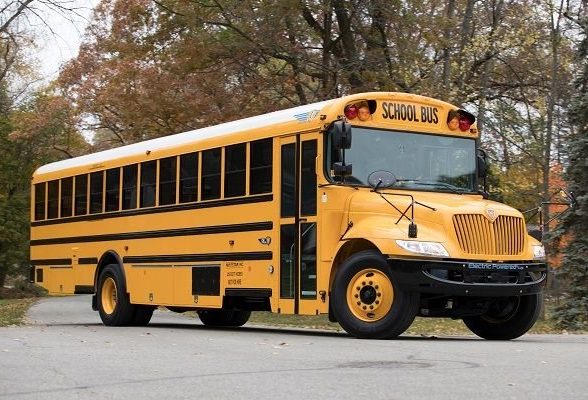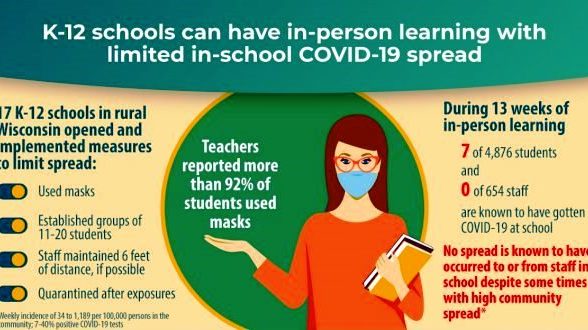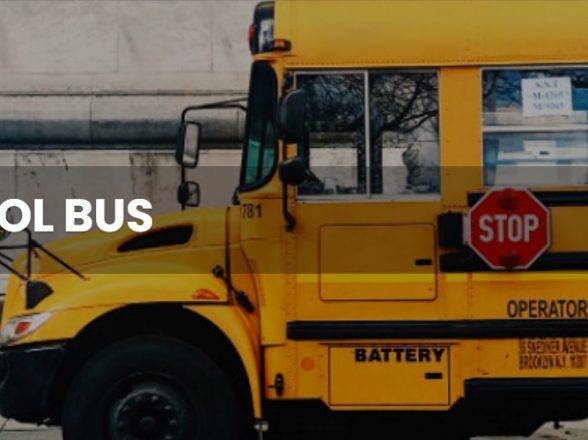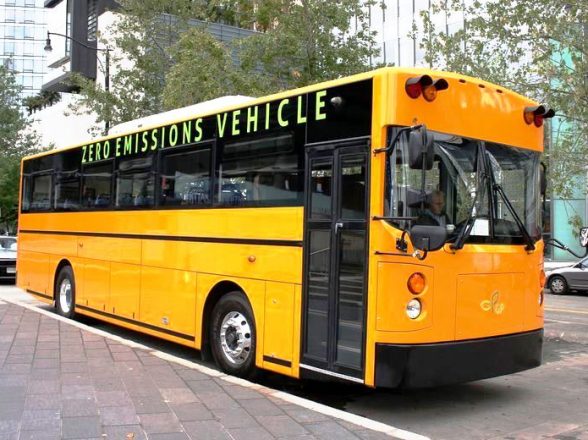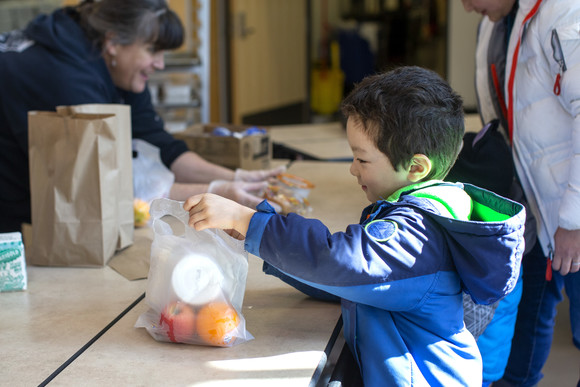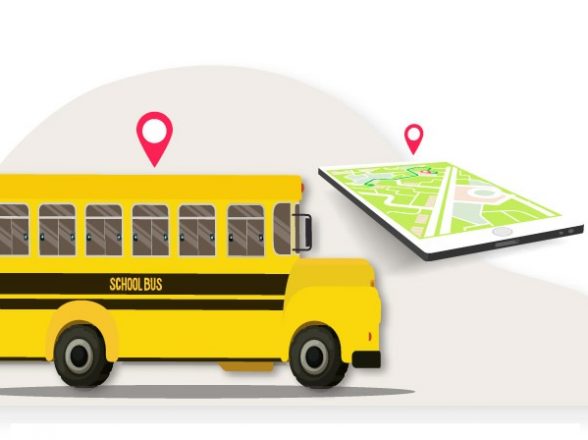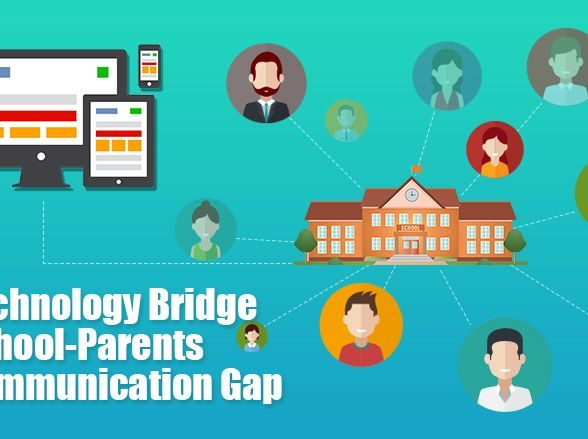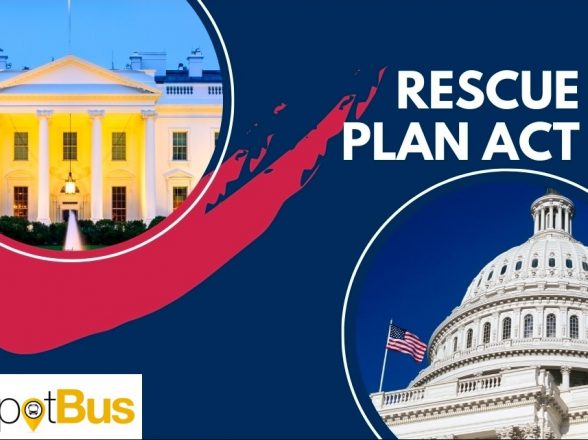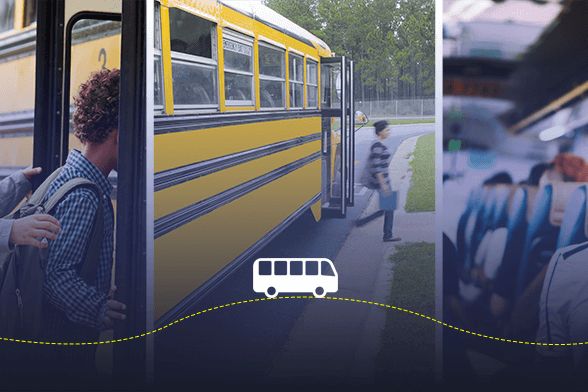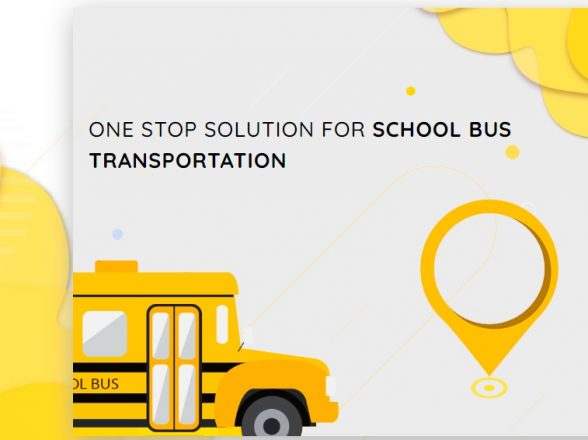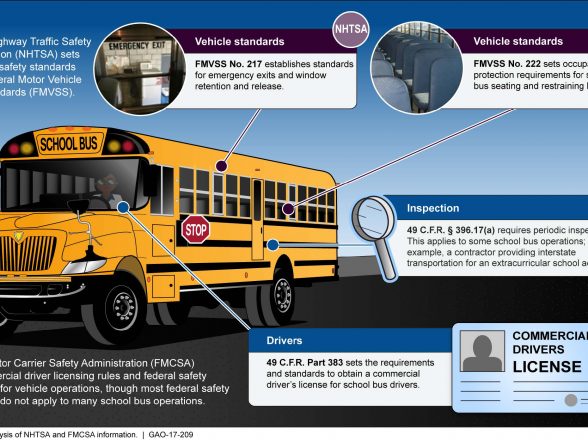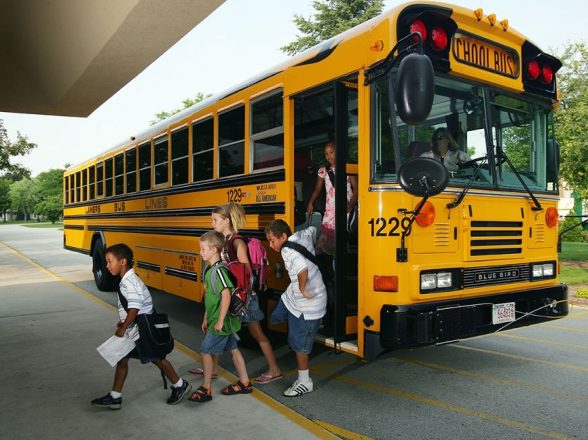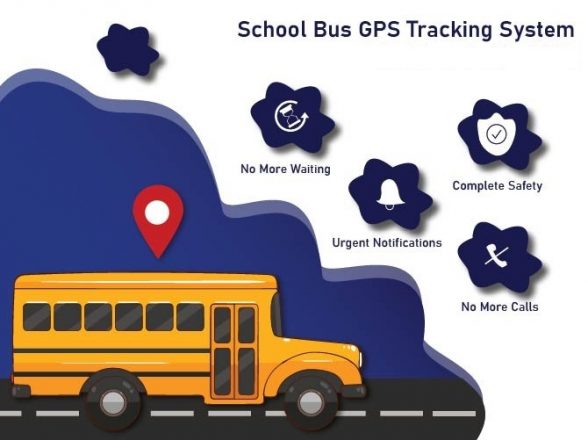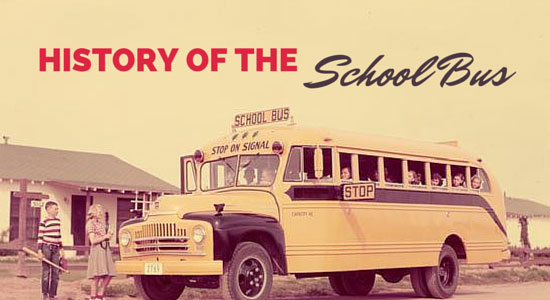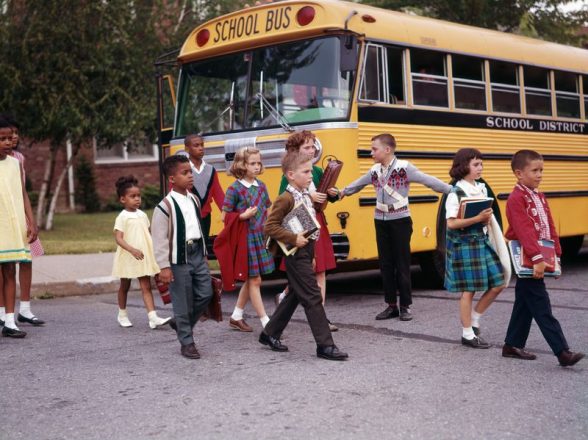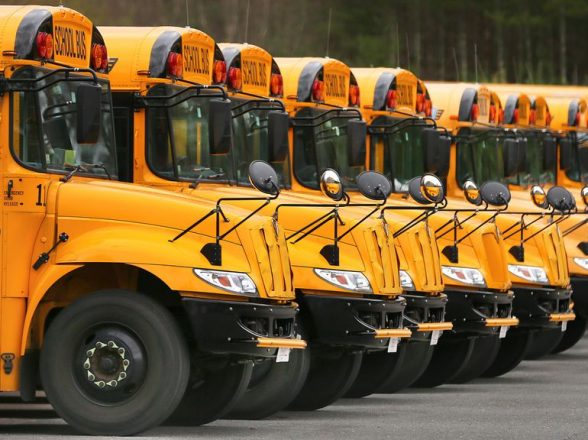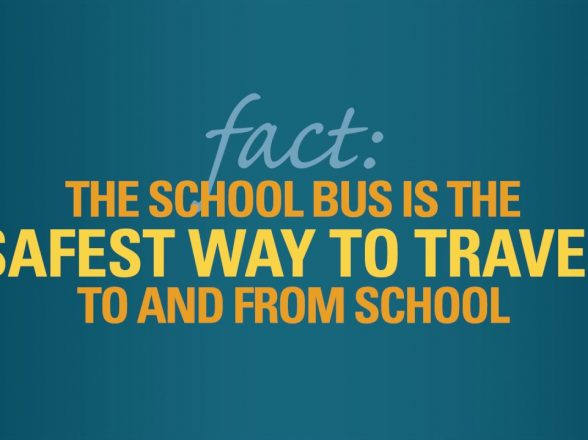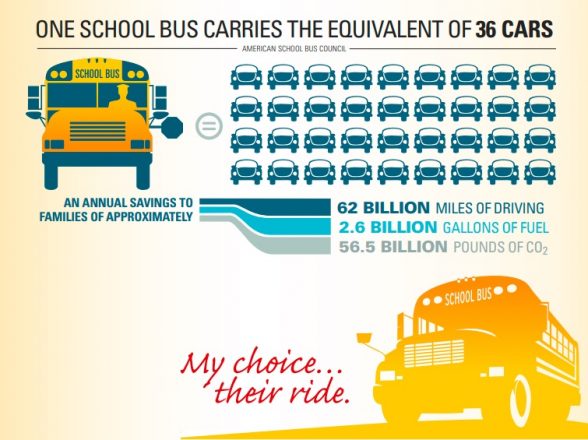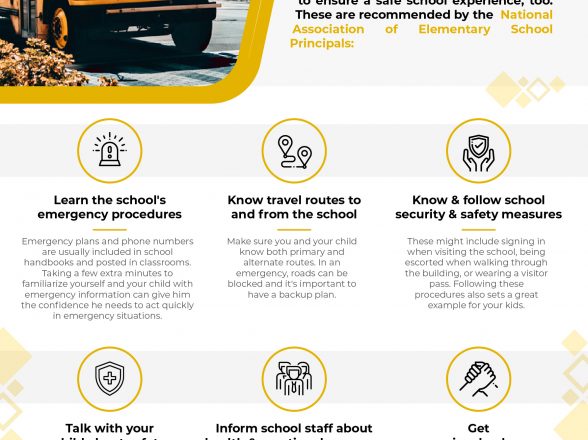The Longer Route To School
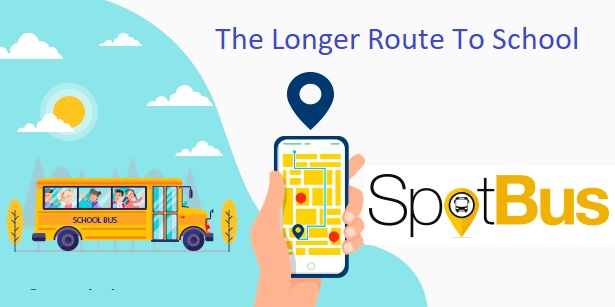
- 20 percent of low-income families (at or below the poverty line, defined as $25,000 for a family of four) own no vehicles and the majority (70 percent) of children from these families take a school bus to school
- On the other hand, 99 percent of non-low-income families own at least one vehicle and the majority (over 50 percent) of children from these families take a private vehicle to school
What about the 80 percent of low-income families who do own at least one vehicle? For these families, vehicle ownership does not necessarily mean vehicle availability: in contrast to their non-low-income peers, the majority of children (60 percent) from low-income, vehicle-owning households continue to take the school bus instead of a private vehicle. The importance of school buses in providing school accessibility and educational opportunity for pre-high school students therefore increases as income decreases and so does the feasibility of being personally driven to school.
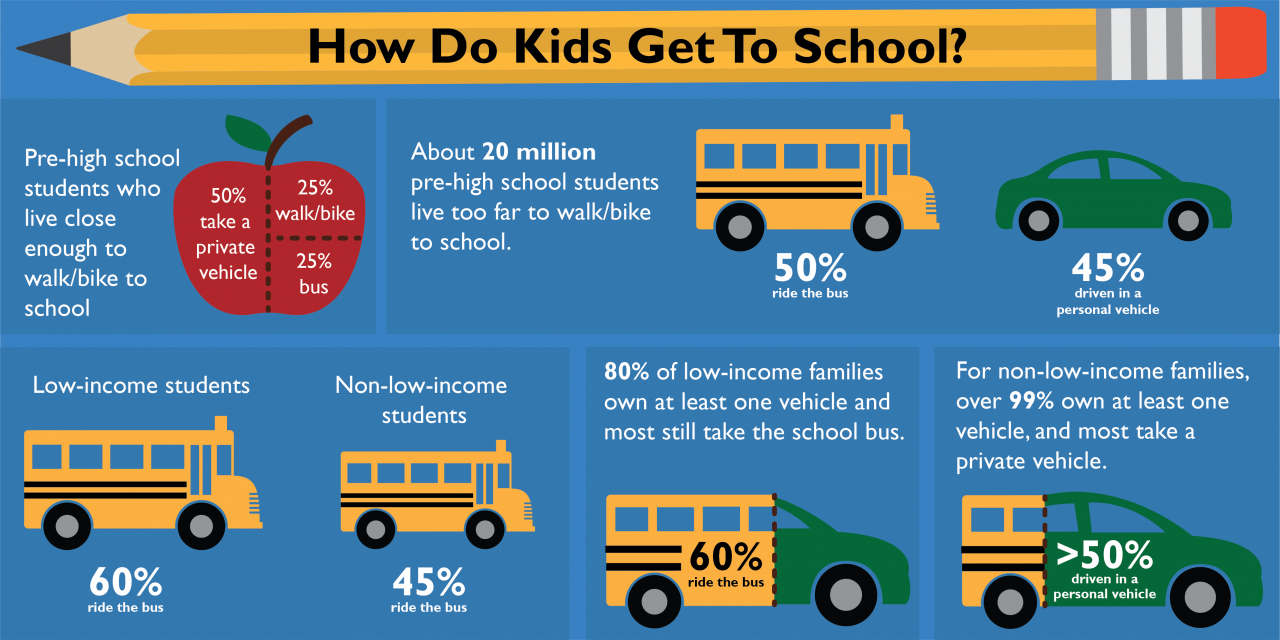
Additional: Since the first all-steel school bus was built in 1930, school buses have been improving the lives of families all over the country. Today they transport 26 million students to and from school each day, saving families about 62 billion miles of driving each year. That’s a significant time and convenience benefit in the lives of busy parents. And millions of gallons of gas it saves means more room in family budgets. But if you think that families of school-age children are the only ones who benefit from school bus ridership, you might want to think again. Educators, environmentalists and communities can also appreciate the many contributions of the school bus.
SOURCE: U.S. Department of Transportation, Federal Highway Administration. National Household Travel Survey (Jan 2021). Available at: https://nhts.ornl.gov
DJ Pakhuongte
dj.pakhuongte@SpotBus.us


